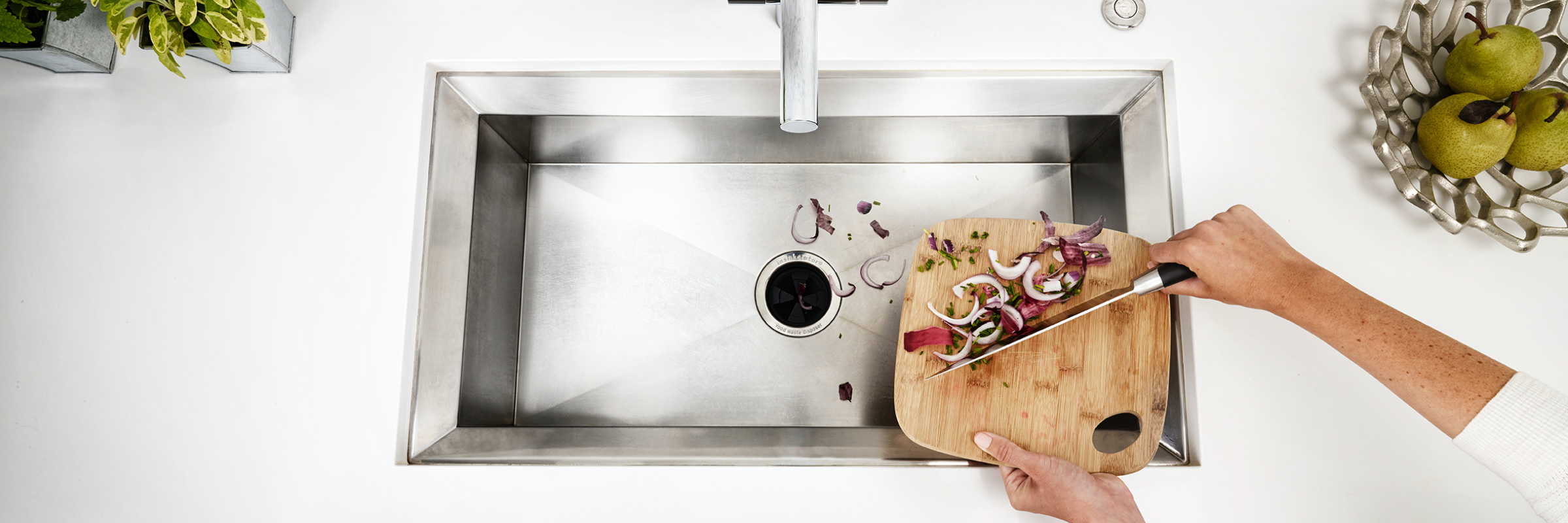Advanced Plumbing Considerations
for Whole Home Sustainability
This section contains ideas regarding plumbing and appliances that should be discussed in further detail with your architect, builder or plumbing contractor. Most ideas/appliances listed here are available in your local Wolseley branch stores. Click here to find your local Wolseley distributor.
Plumbing: Water Heaters
Tank Water Heaters Vs. Tankless Water Heaters
Tank Water Heaters have a storage tank that keeps heated water. They are significantly more efficient than they used to be (check the specific model/manufacturer for specific details) but are still less efficient than most demand-based systems due to standby heat loss and energy usage.
Instantaneous or Tankless Water Heaters are demand-based and produce hot water when the valve is activated. With tankless water heaters, it’s important to consider hot water flow rates to ensure the tank is not too far from the fixture that needs hot water. For example, if the fixture is on the opposite end of your home at the end of the pipe system from the heater, you may need a recirculation circulator installed.
Learn more about Tank Water Heaters and Tankless Water Heaters on the Wolseley PRO Pipeline Blog
Plumbing: Compost and Garburators
Did you know that more than 96% of the food we throw away ends up in landfills? Once in landfills, food breaks down to produce methane, a potent greenhouse gas, which contributes to ozone destruction and climate change. One of the best ways to reduce household food waste is to compost food scraps. Many municipalities have compost or Green Bin programs to encourage homeowners to compost food instead of throwing scraps into the garbage. Homeowners can also go a step further and compost in-home using a garburator.
Garburators are a waste disposal unit installed under a kitchen sink between the drain and the trap. When turned on, they shred food waste into small pieces to pass through the kitchen’s plumbing and through to the water treatment plant.
Plumbing: Cleaning Sinks and Tubs
Sinks available at our showrooms are ultra-durable, come in a range of colours and finishes and do not require chemical cleaners with everyday use. Choosing these sinks reduces the number of chemicals that run through our water supply and into water treatment plants, plus reduces the need for chemicals in the home for bathroom cleaning purposes.
Plumbing: Heat-Saving and Recovery
To save on water heating bills and increase comfort, small changes in construction and plumbing systems can help. For example, using readily available hot water pipes is a great way to reduce utility bills and get comfortable water temperatures.
Learn More About Hot Water And Reduce Waiting Time
Homeowners can also look into installing drain-water heat recovery systems. These systems recover heat from water that goes down the drain for each fixture in the bathroom or kitchen and conserves energy and water.
Learn more About Drain Water Recovery
Plumbing: Rough-Ins For Future Greywater Systems
As water shortages continue to crop up due to climate change, municipalities are looking at greywater as a cost-effective alternative to increasing capacity at wastewater facilities. When building a new home or renovating your current home, have greywater rough-in to keep the building ready for future needs. It’s much easier to plan for greywater in construction than to retrofit later. Currently, there are standards and codes for greywater systems, so it is important for homeowners and contractors to check the standards before starting.
Learn More About Greywater Recycling Systems
It is not that easy to make the right choice.
Kitchen faucets come with
1, 2, 3 or 4 holes.
We make it easy.
Trends Update
Do you want to receive information on exciting products and promotions from Kitchen & Bath Classics and Wolseley Studio?




